The Huntington’s blog takes you behind the scenes for a scholarly view of the collections.
Naughty Los Angeles in the 1890s
Posted on Mon., Nov. 2, 2015 by
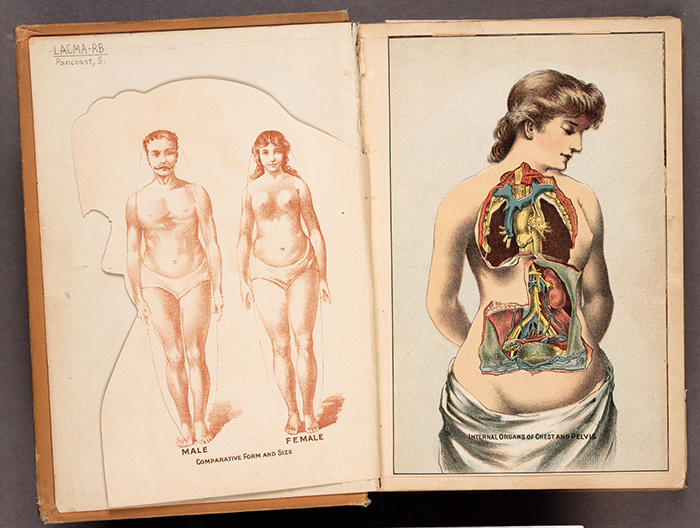
The chapter devoted to fin-de-siècle sexuality in Liz Goldwyn’s book Sporting Guide prominently features these illustrations from The Huntington’s copy of a book with a long and elaborate title: The Ladies’ New Medical Guide an instructor, counsellor and friend in all the delicate and wonderful matters peculiar to women: fully explaining the nature and mystery of the reproductive organs in both sexes—love, courtship, marriage, pregnancy, labor and childbirth with the causes, symptoms and treatment of all their own special diseases, and the diseases of children; how to retain health and beauty, and suggestions for the toilet, etc., by S. Pancoast. Published by J.E. Potter & Co., Philadelphia, 1893. The Los Angeles County Medical Association Collection. The Huntington Library, Art Collections, and Botanical Gardens.
Liz Goldwyn doesn’t shy away from much. Author, fashion icon, filmmaker, scion of Hollywood legends, Goldwyn is a force to be reckoned with across multiple genres of creativity and artistic production.
There’s a thread in all this, one that Goldwyn herself readily admits. And that’s history. She’s fascinated not only with the usual “who did what to whom?” questions of power and drama, but also with questions of “what did they say while doing it?” and, intriguingly, “what did they wear?”
Author of a well-received history of burlesque—complete with sumptuous images of G-strings and voluptuous female forms of an earlier era—Goldwyn has a new book that peels back a different layer of history. In the just-released Sporting Guide, Goldwyn takes her fascination with the darker impulses of human behavior to the shadowy byways and pay-by-the hour boudoirs of late 19th- and early 20th-century Los Angeles. On Nov. 4, Goldwyn will join me onstage in Rothenberg Hall for a discussion of her new book.
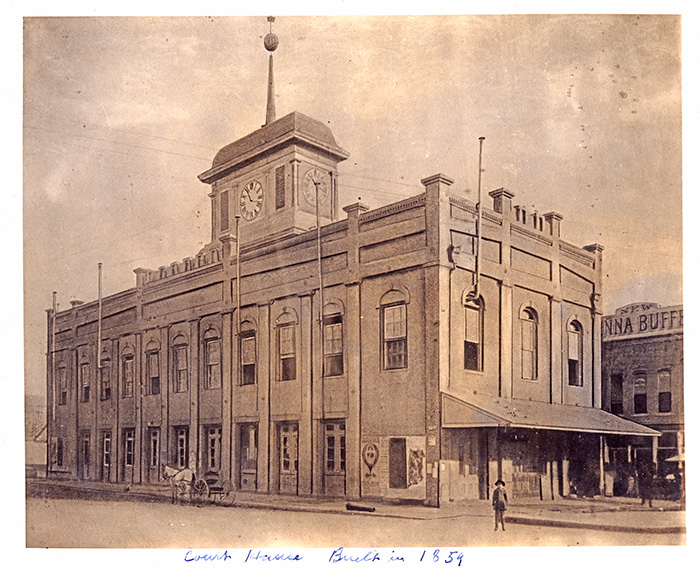
Pearl Morton, one of the madams in Goldwyn’s book, runs her high-end brothel in this building, which was once the county courthouse. Courthouse on the corner of Spring, Court, and Main Streets, Los Angeles. Built in 1859. Photographer unknown. 20 ½ x 25 ½ cm. Historical Society of Southern California Collection. The Huntington Library, Art Collections, and Botanical Gardens.
An historical novel, but one deeply researched and documented, Sporting Guide is the darkest of romps through the red-light district of turn-of-the-century Los Angeles. Much of it is true: the madams and the pimps, the geography of vice, the haphazard oversight of the law, and the lines variously drawn by race, ethnicity, and proclivity. Much of it is fiction: some (though not all) of the characters, the plot, and the friendships forged out of oppression, depravity, or just plain desperation.
Tied together with astonishing images of the era, many of them drawn from The Huntington’s archives, Goldwyn’s book is proof perfect that history is an expansive canvas and that it beckons all who wish to make use or sense of it. Novelist, scholar, filmmaker—all can bring their ideas to history and history to their ideas. Goldwyn is all three, and Sporting Guideis at once an imagined Los Angeles and a Los Angeles meticulously put together by way of the archive. It’s dark, it’s naughty, and it has the ring of hidden truth.
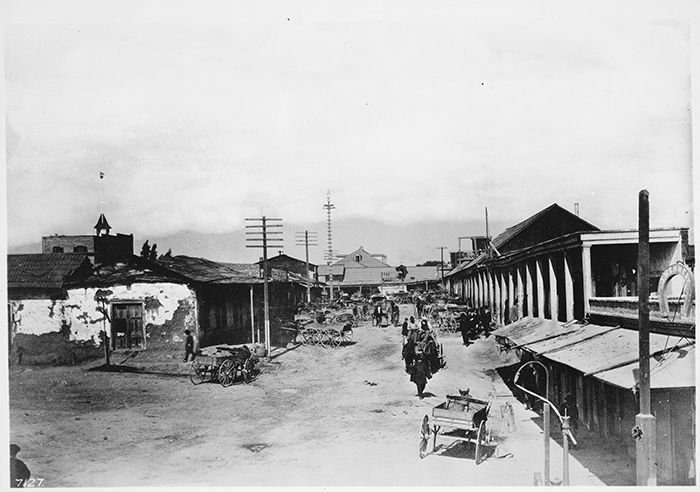
In Pearl Morton’s day, the dollar prostitutes could be found in this grim section of Los Angeles. Calle de los Negros, Los Angeles, 1882. Gelatin silver print; 19 ½ x 25 cm. Photographer unknown. C.C. Pierce Collection. The Huntington Library, Art Collections, and Botanical Gardens.
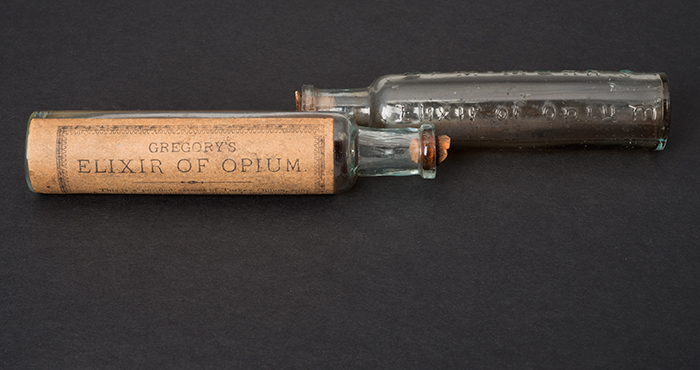
In her chapter on drug addiction—a common affliction of the characters in Sporting Guide—Goldwyn features an image based on the item on the left from The Huntington’s Jay T. Last Collection: Gregory’s Elixir of Opium, Buffalo, New York. ca. 1830-60. 12 cm. x 3 cm. The label reads: “This is a purified extract of turkey opium, containing all the valuable properties of the drug, but freed from its noxious principles. Dose: 10 to 25 drops.” The Huntington Library, Art Collections, and Botanical Gardens.
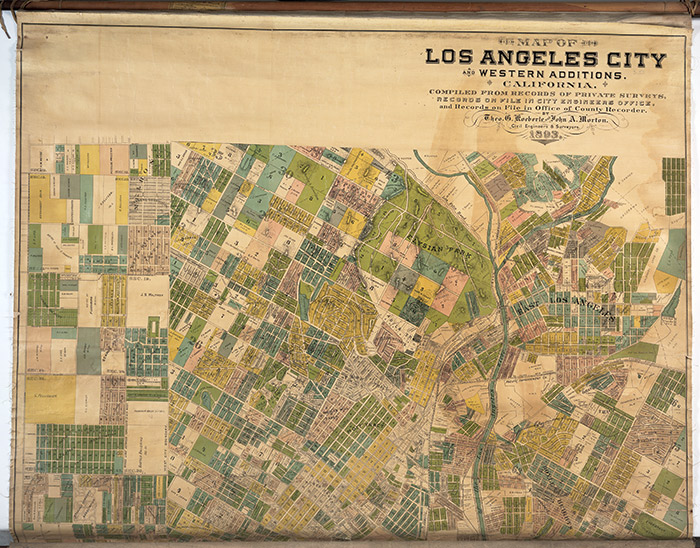
Goldwyn’s book includes this map of Los Angeles, created during the era in which her characters lived. Map of Los Angeles city and western additions compiled from records of . . . Theo. G. Koeberle and John A. Morton, 1893. Los Angeles Lithographic Co. Lithograph, 150 x 150 cm. The Huntington Library, Art Collections, and Botanical Gardens.
“In Conversation with Liz Goldwyn” will take place at 7:00 p.m. on Nov. 4 in Rothenberg Hall. Free. Book signing afterward. To make a reservation, go here.
Related content on Verso:
Aristotle’s Masterpiece (April 20, 2015)
William Deverell is professor of history and chair of the history department at the University of Southern California. He is also director of the Huntington-USC Institute on California and the West.